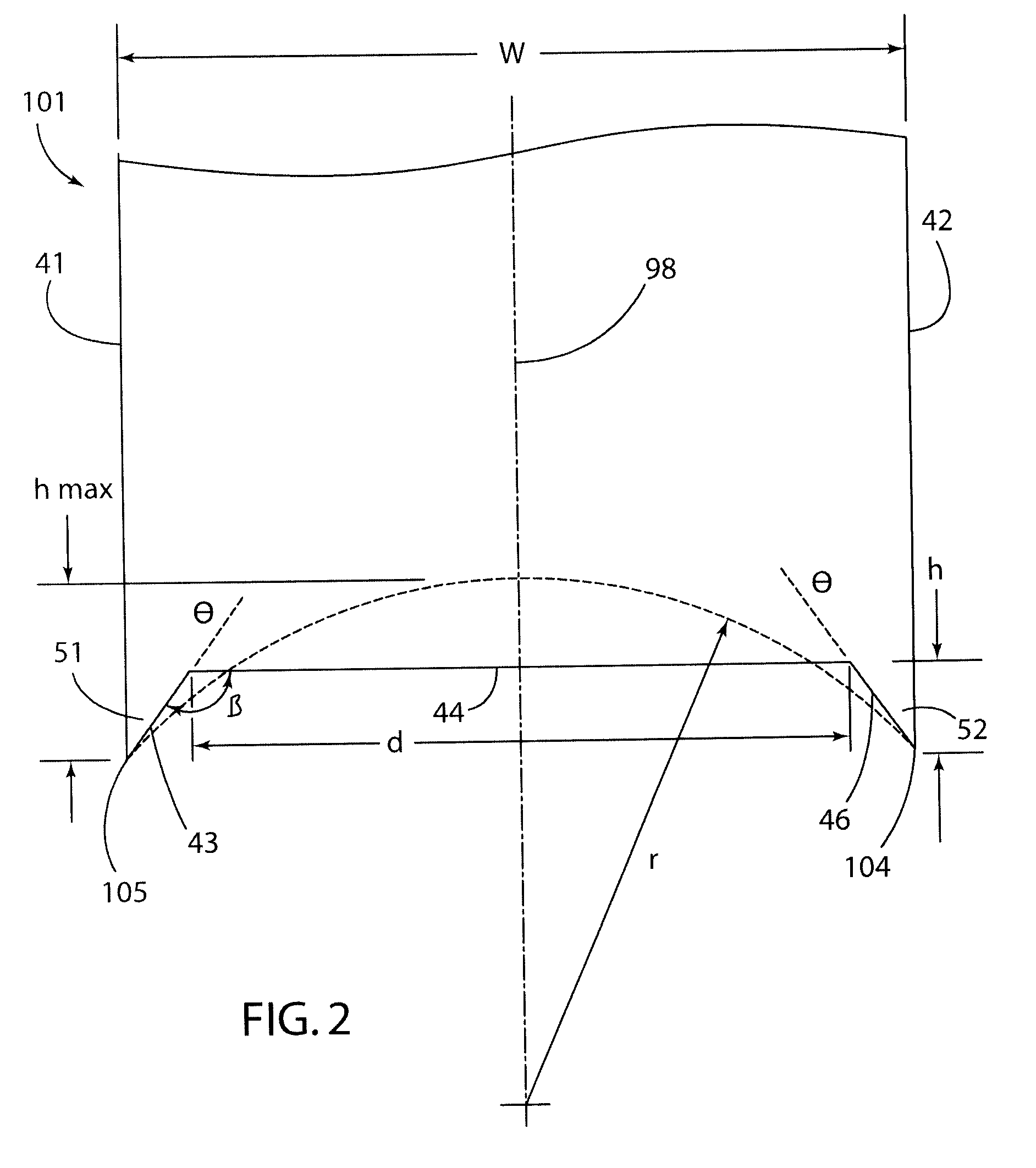Ice skate blades
a technology of ice skate blades and blades, which is applied in the direction of skis, ski-brakes, skates, etc., can solve the problems of poor turning ability, h, and , achieve the effect of high quality
- Summary
- Abstract
- Description
- Claims
- Application Information
AI Technical Summary
Benefits of technology
Problems solved by technology
Method used
Image
Examples
Embodiment Construction
[0026]It will be apparent to those skilled in the art, that is, to those who have knowledge or experience in this area of technology that many uses and design variations are possible for the improved ice skate blade profiles disclosed here. The following detailed discussion of various alternatives and preferred features and embodiments will illustrate the general principles of the invention with reference to the ice skate blade groove profiles particularly suited for skaters in hockey, figure skating, and speed skating. Other embodiments suitable for other applications will be readily apparent to those skilled in the art given the benefit of this disclosure.
[0027]Turning now to the drawings, FIG. 1 shows an ice skate 10 having an ice skate blade 101 in accordance with one embodiment. The blade has a long length 12 and a shorter width w generally perpendicular to the length. The length may have a rocker radius RR portion and may also have a portion near the ends with a second radius ...
PUM
 Login to View More
Login to View More Abstract
Description
Claims
Application Information
 Login to View More
Login to View More - R&D
- Intellectual Property
- Life Sciences
- Materials
- Tech Scout
- Unparalleled Data Quality
- Higher Quality Content
- 60% Fewer Hallucinations
Browse by: Latest US Patents, China's latest patents, Technical Efficacy Thesaurus, Application Domain, Technology Topic, Popular Technical Reports.
© 2025 PatSnap. All rights reserved.Legal|Privacy policy|Modern Slavery Act Transparency Statement|Sitemap|About US| Contact US: help@patsnap.com



